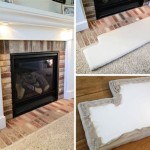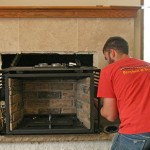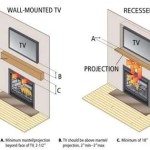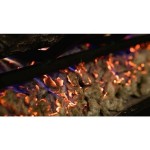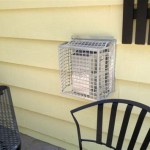How Much Does It Cost To Install A Fireplace Insert?
Installing a fireplace insert can significantly enhance the heating efficiency and aesthetic appeal of an existing fireplace. However, understanding the associated costs is crucial for budgeting and planning this home improvement project effectively. The total expense is influenced by several factors, including the type of insert selected, the complexity of the installation, and regional labor rates.
A fireplace insert is a self-contained unit designed to fit inside an existing fireplace opening. Unlike traditional open fireplaces, inserts are much more efficient at heating a space because they are closed systems that prevent significant heat loss up the chimney. They typically burn wood, gas, or electricity. Each fuel type presents distinct installation requirements and cost considerations.
Factors Influencing Fireplace Insert Installation Costs
Several key elements contribute to the overall cost of installing a fireplace insert. Comprehending these factors will enable a more accurate estimation of the project's financial implications.
Insert Type: The type of insert selected has a substantial impact on the cost. Wood-burning inserts generally have a lower initial purchase price compared to gas or electric inserts. However, wood inserts require a chimney liner installation for safety and efficiency, which adds to the overall expense. Gas inserts often necessitate running a gas line to the fireplace, a task that requires a qualified plumber or gas fitter. Electric inserts are typically the easiest to install and have the lowest initial cost, but their long-term operating expenses may be higher depending on electricity rates.
Insert Size and BTU Output: The size of the insert, measured in British Thermal Units (BTUs), should be appropriate for the size of the room it needs to heat. A larger, more powerful insert will cost more than a smaller one. Selecting an insert with the correct BTU output is essential for maximizing heating efficiency and preventing overheating.
Chimney Condition and Liner: The condition of the existing chimney significantly impacts the installation cost. A professional inspection is typically required to assess the chimney's structural integrity and ensure it meets safety standards. Any necessary repairs, such as brickwork or flue repairs, will increase the overall cost. Moreover, many installations require a new chimney liner, especially for wood-burning inserts. Liners are necessary to properly vent the combustion gases and protect the chimney from deterioration. The cost of a liner can vary depending on the material (stainless steel is common) and the length required.
Installation Complexity: The complexity of the installation can affect the labor costs. Factors that contribute to complexity include the accessibility of the fireplace, the need for modifications to the fireplace opening, and the difficulty of running gas lines or electrical wiring. A straightforward installation will be less expensive than one that requires significant modifications or specialized tools.
Regional Labor Costs: Labor costs vary significantly from one region to another. Areas with a higher cost of living typically have higher hourly rates for skilled tradespeople, such as plumbers, electricians, and chimney technicians. Obtaining multiple quotes from qualified installers is crucial to ensure a competitive price.
Permits and Inspections: Most municipalities require permits for fireplace insert installations. The cost of permits can vary depending on the location. Inspections are also typically required to ensure the installation complies with local building codes and safety regulations. These fees should be factored into the overall cost estimate.
Estimating the Cost of Each Type of Fireplace Insert
The overall cost of a fireplace insert installation depends heavily on the type of insert chosen. A breakdown of the typical costs associated with each type can offer a clearer understanding of the investment involved.
Wood-Burning Fireplace Inserts: Wood-burning inserts generally range in price from $1,500 to $4,000 for the unit itself. However, the installation costs can be significant, primarily due to the requirement for a chimney liner. A stainless-steel chimney liner installation can add another $1,000 to $3,000 to the total cost. Labor costs for the insert installation itself can range from $500 to $1,500, depending on the complexity. Therefore, the total cost for a wood-burning fireplace insert installation can range from $3,000 to $8,500.
Gas Fireplace Inserts: Gas fireplace inserts typically cost between $2,000 and $5,000. The installation costs are also significant, primarily due to the need for a gas line connection. Running a gas line can cost between $500 and $2,000, depending on the distance from the gas meter and the complexity of the installation. Labor costs for the insert installation itself can range from $500 to $1,500. The total cost for a gas fireplace insert installation can therefore range from $3,000 to $8,500, similar to wood-burning inserts.
Electric Fireplace Inserts: Electric fireplace inserts are generally the least expensive to purchase, with prices ranging from $500 to $2,500. The installation costs are also typically lower, as they usually only require plugging into a standard electrical outlet. However, some installations may require running a new electrical circuit, which could add to the cost. Labor costs for a simple electric insert installation can range from $200 to $500. Therefore, the total cost for an electric fireplace insert installation can range from $700 to $3,000.
Additional Cost Considerations
Beyond the core costs of the insert and installation, there are several other expenses to consider when budgeting for a fireplace insert project.
Fireplace Opening Modifications: In some cases, the fireplace opening may need to be modified to accommodate the new insert. This could involve resizing the opening or making structural changes to the surrounding masonry. Such modifications can add significantly to the overall cost.
Hearth Extensions and Surrounds: Depending on the type of insert and local building codes, a hearth extension may be required to protect the flooring in front of the fireplace. A new surround can also enhance the aesthetic appeal of the insert. These additions can range in cost from a few hundred dollars to several thousand dollars, depending on the materials and design.
Fuel Costs: The long-term fuel costs should also be considered. Wood-burning inserts require a consistent supply of firewood, which can be purchased or sourced independently. Gas inserts require natural gas or propane, and the cost of these fuels can fluctuate. Electric inserts have the most predictable fuel costs, but electricity rates can vary.
By carefully considering these factors and obtaining detailed quotes from qualified professionals, homeowners can develop a realistic budget for installing a fireplace insert and enjoy the benefits of improved heating efficiency and enhanced home aesthetics.

Estimated Page Fireplaces Stoves Inserts Wood Gas Pellet

How Much Does A Gas Fireplace Cost Fireplaces Direct Learning Center

Gas Fireplace Insert Cost Forbes Home

How Much Does A Gas Fireplace Cost Fireplaces Direct Learning Center

How Much Does It Cost To Install A Gas Fireplace Homeserve Usa

What Does It Cost To Install A Fireplace Vs Wood Stove Stamford Fireplaces

Estimated Page Fireplaces Stoves Inserts Wood Gas Pellet

Gas Fireplace Cost Guide Unit Add Ons Installation More

How Much Does A Fireplace Insert Cost 2024 Data

2024 Fireplace Installation Costs Gas Wood Burning Electric

